Occupational safety training in stone statue production
99,000 ₫
Note: The above price is calculated for one person, and the price may fluctuate depending on the number of trainees participating in the course and market movements. For more accurate pricing support, please refer to the price list or contact our consulting staff directly.
Occupational safety is an important issue in stone statue production factories and needs to be addressed promptly to ensure the health and safety of workers, as well as to enhance the reputation of businesses. The Occupational Safety Training course is one of the effective solutions to raise awareness about accident prevention for workers participating in stone statue production.
Table of Contents
Toggle1. Overview of Stone Statues
a. What is a stone statue?
A stone statue is a type of artwork crafted from natural stone. It is an artistic form representing a block of stone that has been carved or shaped into various forms to create an aesthetically valuable work. Stone statues can be made by carving, chiseling, or shaping the stone according to the artist’s concept.
Crafting stone statues requires skill and advanced techniques. Artisans often use tools such as carving tools, stone cutting machines, stone grinding machines, and other instruments to shape and finish the work. Common stones used for crafting statues include marble, granite, limestone, and many other natural stones.
Stone statues can carry multiple meanings and represent various themes, ranging from religious statues, cultural statues, commemorative statues, to abstract or modern works. Stone statues are often displayed in museums, parks, gardens, or public spaces to convey artistic messages or show respect and remembrance for an event, a famous person, or an idea.

b. Machinery used in stone statue production
In the process of stone statue production, several types of machinery are used to assist in crafting and processing the stone. Below are some commonly used machines in stone statue production:
- Stone cutting machine: Used to cut stone into blocks or slabs of desired sizes. Stone cutting machines typically have diamond blades or high-quality cutting blades to cut through various types of stone.
- Stone engraving machine: Used to carve or chisel patterns, models, or shapes on the stone surface. This machine is often computer-controlled (CNC) to produce complex designs or shapes.
- Stone grinding machine: Used to grind the stone surface to make it smooth and polished. Grinding machines use grinding stones, abrasives, and water to remove impurities, cracks, and create a smooth surface.
- Stone polishing machine: Used to polish the stone surface and create a glossy effect. The machine uses polishing pads and compounds to achieve a smooth, shiny finish.
- Laser engraving machine: Used to engrave or etch patterns and text on the stone surface. This machine employs laser technology to create precise and detailed designs and letters.

c. Stone statue manufacturing companies in Vietnam
Stone statue production is a developing industry in Vietnam, with many companies operating across the country. Below are some notable stone statue manufacturing companies in Vietnam:
- Ninh Van Fine Arts Stone Joint Stock Company: Located in Ninh Van, Hoa Lu, Ninh Binh, this company is one of the leading enterprises in the field of stone statue production and crafting in Vietnam. The company specializes in producing aesthetically valuable stone artworks for domestic and international markets.
- Dong Tam Fine Arts Stone Joint Stock Company: Dong Tam is one of the largest suppliers and producers of stone statues in Vietnam, with stone crafting factories in Bac Ninh, Hung Yen, and Ninh Binh provinces.
- Non Nuoc Fine Arts Stone Joint Stock Company: Based in Da Nang, Non Nuoc is a leading stone statue manufacturer in Central Vietnam, known for finely crafted statues and diverse designs.
- Ha Long Fine Arts Stone Joint Stock Company: Located in Ha Long, Quang Ninh, famous for the Ha Long Bay landscape, this company specializes in stone statues and other natural stone artworks.
- Que Anh Fine Arts Stone Joint Stock Company: Based in Thanh Tri, Hanoi, Que Anh is one of the oldest stone crafting companies in Vietnam, producing a wide variety of high-quality stone artworks.
These are only a few examples of stone statue manufacturers in Vietnam. Many other companies also contribute to the growth and promotion of stone statue art domestically.

d. Specific jobs in a stone statue production factory
Group 1
- Executive director, deputy executive director, department heads in the stone statue production factory.
Group 2
- Safety officer: manages safety within the factory, designs safety procedures, supervises and ensures workers comply with safe work practices.
Group 3
- Selecting stone: Artisans choose suitable stone for the artwork based on design requirements, hardness, and stone characteristics. Stones may come from natural sources or stone production factories.
- Stone cutting: Stones are cut using stone cutting machines to create initial blocks or shapes for statues. This step is crucial for establishing a foundation for the crafting process.
- Stone carving: Using stone engraving machines or hand tools, artisans carve or chisel patterns, models, or details on the stone surface. This requires skill and precision to create intricate details.
- Grinding and polishing: After carving, stones undergo grinding and polishing to smooth the surface and create a glossy effect. Grinding machines and polishing compounds are used to achieve a polished finish.
- Finishing and detailing: Artisans complete the final details of the work, such as eyes, mouth, hands, feet, or other small features. This is usually done manually with small tools and detailed sculpting techniques.
Group 4
- Office, service, sales, and marketing jobs.
- Production management, quality management, human resource management, materials management, financial accounting management.
- Design: Stone statue design starts from the artist’s initial idea. Designs may be on paper or created using computer-aided design (CAD) to develop a 3D model of the artwork.
2. Overview of occupational safety training in stone statue production
In this article, we focus on Group 3, because Group 3 is directly involved in the production process and faces the highest occupational safety risks. For reference on other groups, see here
a. What is Group 3 occupational safety training?
- Group 3 occupational safety training consists of sessions that equip workers with knowledge on how to prevent workplace accidents.
- The training helps workers identify and avoid hazards, minimizing the risk of occupational accidents during work.
REGISTER FOR OCCUPATIONAL SAFETY TRAINING SERVICE
b. Training duration
Initial safety training duration
- Total training time is at least 24 hours, including exam time.
- 8 hours of theory on policies, laws on occupational safety and hygiene
- 8 hours of theory on basic occupational safety and hygiene knowledge
- 4 hours of theory on specialized training content
- 2 hours of practical training on specialized content
- 2 hours for the final theory test at the end of the course
The safety training center will distribute the time into multiple sessions depending on workers’ schedules. Typically, there are 6 training sessions over 3 days if the production company arranges continuous study time.
Periodic safety training duration
- Before the occupational safety card expires, workers seeking renewal must undergo periodic occupational safety training, with training duration being at least 50% of the initial training duration.
Explanation: The total periodic safety training time is at least 12 hours, including exam time. Upon completion of the course and passing the test, workers will have their occupational safety card renewed.
c. Training course content
| No. | TRAINING CONTENT | TRAINING TIME (HOURS) | |||
| Total | Including | ||||
| Theory | Practice | Test | |||
| I | Policies and laws on occupational safety and hygiene | 8 | 8 | 0 | 0 |
| 1 | Overview of legal documents on occupational safety and hygiene. | 6 | 6 | ||
| 2 | Standards and technical regulations on occupational safety and hygiene. | 1 | 1 | ||
| 3 | Specific regulations by government agencies on occupational safety when building, expanding, or renovating facilities, producing, using, storing, and inspecting machinery, equipment, materials, and substances with strict safety and hygiene requirements. | 1 | 1 | ||
| II | Basic knowledge of occupational safety and hygiene | 8 | 8 | 0 | 0 |
| 1 | Basic knowledge of hazardous and harmful factors in the workplace. | 4 | 4 | ||
| 2 | Methods to improve working conditions. | 1 | 1 | ||
| 3 | Safety culture in production and business. | 1 | 1 | ||
| 4 | Rights and obligations of employers and workers; occupational safety policies and regimes for employees; roles and responsibilities of safety staff network. | 1 | 1 | ||
| 5 | Occupational safety rules, signage, safety instructions, use of safety equipment and personal protective equipment; basic first aid skills and occupational disease prevention. | 1 | 1 | ||
| III | Specialized training content | 6 | 4 | 2 | 0 |
| Comprehensive knowledge of machinery, equipment, substances generating hazardous factors; analysis, assessment, and management of occupational safety risks; safe work procedures with machinery, equipment, and substances with strict safety requirements. | 6 | 4 | 2 | ||
| IV | Final training test | 2 | 2 | 0 | 0 |
| Total | 24 | 22 | 2 | ||
See more training content for all 6 groups
d. Occupational safety card
After completing the occupational safety training and passing the test, workers will be issued an occupational safety card (commonly referred to as a Group 3 safety certificate).
The Group 3 safety card clearly shows information such as name, date of birth, job position, and specific working environment. It also includes training duration, red stamp, and signature confirming completion of the training.
According to the regulations on card issuance in Clause 2 of Article 24, Decree 44/2016/NĐ-CP, there are two cases:
- If the employer and employee have a labor contract, the employer must sign, stamp, and seal the occupational safety card for Group 3 trainees after they complete the training and pass the exam.
- If the worker is freelance or seasonal, without a labor contract, the training unit must sign, stamp, and seal the card after the worker completes the training and passes the test.

3. Identifying hazards affecting workers in stone statue production
During stone statue production, there are several hazards that can affect workers’ health and safety. Below are some common hazards that need to be recognized and managed:
- Stone dust: Cutting, grinding, and chiseling stone can generate airborne stone dust. Prolonged inhalation of stone dust can cause respiratory issues and may increase the risk of respiratory cancer. To prevent this, workers should be equipped with proper personal protective equipment such as masks, safety goggles, and dust-resistant clothing.
- Noise: The use of advanced machinery in stone statue production can generate high levels of noise. Noise negatively affects workers’ hearing, causes stress, and can impact overall health. Workers should use ear protection to safeguard against noise.
- Cuts and injuries: Cutting, engraving, and chiseling tasks can pose a risk of cuts and injuries if safety rules are not followed. Using precision tools, wearing protective clothing, and adhering to safe work procedures can reduce these risks.
- Posture-related issues: Working for long periods in improper or uncomfortable positions can cause muscle strain, back pain, and other health problems. Workers should maintain correct posture, take regular breaks, and follow ergonomic principles.
- Chemical use: In some cases, chemicals such as adhesives, cleaning compounds, and colorants may be used during stone statue production.

4. Common occupational accidents in stone statue production
During stone statue production, several types of occupational accidents can occur. Below are some common accidents in the stone statue industry:
- Cuts and injuries: Cutting, engraving, and chiseling tasks pose a risk of cuts and injuries if safety rules are not followed or tools are used incorrectly. This can result in wounds such as cuts, scratches, eye injuries, or even loss of fingers.
- Falls, slips, and trips: Rough or slippery floors and insufficiently lit work environments can increase the risk of falls and slips. Workers may suffer injuries from falling, jumping off platforms, slipping, or colliding with nearby objects.
- Impact from falling heavy objects: During the movement and transportation of stone statues, heavy objects may fall and injure workers. This can occur if proper safety measures are not in place to stabilize heavy items and protect surrounding workers.
- Exposure to stone dust and chemicals: Cutting, grinding, and chiseling generate stone dust in the air, which is hazardous to the respiratory system. Additionally, the use of chemicals such as adhesives, cleaning agents, and colorants can pose health risks if not handled properly or without adherence to safety regulations.
- Machinery accidents: Operating stone processing machinery carries risks such as collisions, entanglement, cuts, crushing, or flying debris. These accidents can occur if safety rules are not strictly followed.
5. Safety measures when participating in stone statue production
To ensure worker safety in stone statue production, safety measures must be applied. Some common safety measures include:
- Training and education: Provide occupational safety training and education for all employees, including new hires. Ensure they understand safety rules, work procedures, and proper use of personal protective equipment.
- Use of personal protective equipment (PPE): Ensure workers are provided with and correctly use PPE such as masks, safety goggles, gloves, protective clothing, safety shoes, and ear protection. PPE must be worn during work.
- Stone dust management: Manage and control stone dust during production. Use ventilation systems, dust extraction, and air filtration to reduce airborne dust. Ensure work areas are cleaned regularly and prevent dust from entering unsafe areas.
- Machinery inspection and maintenance: Conduct regular inspection and maintenance of production equipment and machinery. Ensure stable and safe operation to prevent unexpected accidents.
- Chemical handling: Use chemicals according to manufacturer instructions and follow safety rules. Provide clear guidance to employees on safe use, storage, and disposal of chemicals.
- Incident reporting and handling: Encourage workers to report any incidents, accidents, or hazards immediately. Establish procedures for prompt incident management.
- Regularly conduct occupational environment monitoring in factories, collect and analyze harmful factors affecting workers, and adjust to reduce risks to prevent occupational diseases.
6. Benefits of occupational safety training in stone statue production
An Toan Nam Viet provides businesses with the following benefits upon completing occupational safety training in accordance with Decree 44/2016/NĐ – CP on occupational safety and hygiene for companies and enterprises:
- Workers can recognize potential occupational hazards and take preventive measures to avoid accidents.
- Enterprises can establish risk prevention measures in production, operation, and maintenance processes.
- Reduce costs associated with workplace safety risks.
- Uninterrupted production increases labor productivity and product quality.
- Comply with labor safety laws, avoiding legal risks.
- Enhance credibility and professionalism, improving the company’s brand reputation.
An Toan Nam Viet’s training courses are designed to protect individuals from external hazards that could lead to injury or, in severe cases, death.
REGISTER FOR OCCUPATIONAL SAFETY TRAINING SERVICE
7. Customer feedback after completing stone statue production safety training
An Toan Nam Viet has years of experience supporting enterprises across Vietnam, particularly in the southern provinces. Our occupational safety training is increasingly professional, and our growth is driven by positive feedback and suggestions from our partners. Below are testimonials from our valued clients.
Bac Nam E&C Construction Investment Joint Stock Company
“My first experience with An Toan Nam Viet was impressive due to the 24/7 support from the consulting team. The class organization was quick and convenient for our company. Thank you very much for Nam Viet’s service!”
See more customer interviews after using the service from An Toan Nam Viet
8. An Toan Nam Viet’s occupational safety training capacity
An Toan Nam Viet is a leading center for professional and high-quality occupational safety training in Vietnam, conducting training continuously at workshops, factories, or construction sites nationwide (all 63 provinces).
REGISTER FOR OCCUPATIONAL SAFETY TRAINING SERVICE
Occupational safety training license
- An Toan Nam Viet has been inspected and certified by the Department of Occupational Safety under the Ministry of Labor, Invalids and Social Affairs, granting certification for occupational safety training. This reinforces our training capability.

Training materials and lectures
- Before training materials are used in occupational safety training courses, they are reviewed to ensure accuracy and effectiveness.
- Teaching methods of instructors follow An Toan Nam Viet standards, developed by experts in occupational safety to maximize learning effectiveness.
Facilities
- Control of classroom factors enhances teaching efficiency and student learning outcomes.
- Our training facilities provide spacious classrooms with standard lighting, training equipment, and more.
9. Nationwide reputable occupational safety training center
At An Toan Nam Viet, we prioritize occupational safety training. We aim to equip workers with knowledge to protect themselves, contributing to national development.
To ensure effective training, we meticulously prepare every detail, from tools and teaching equipment to curriculum, materials, audio, and lighting.
Our instructors are experienced experts, including research on hazard identification and prevention across industries. Their lectures are practical, vivid, and easy to understand. Knowledge is aligned with Decree 44/2016/NĐ-CP.
Through training, workers learn to prevent hazards and protect themselves, applying knowledge effectively in their work.
Our training center proudly provides professional occupational safety training with advantages including:
- Competitive training costs with guaranteed quality.
- Flexible training schedules adapted to company production.
- Quick certification procedures in compliance with legal regulations.
- Instructors with many years of experience.
- Controlled classroom environment to maximize teaching efficiency and learning outcomes.
- Lectures tailored to workplace safety for enterprises.
- Dedicated, professional service supporting clients accurately and promptly.

10. Additional reference materials for stone statue production safety training
- Occupational safety training materials set
- Stone statue production safety materials
- Occupational safety training test set
- Stone statue production safety training curriculum
- Stone statue production occupational safety quiz
1 review for Occupational safety training in stone statue production
No comments yet

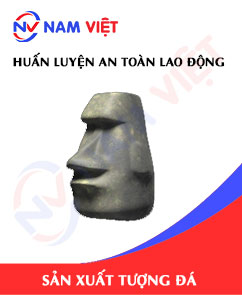
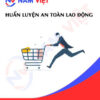
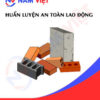



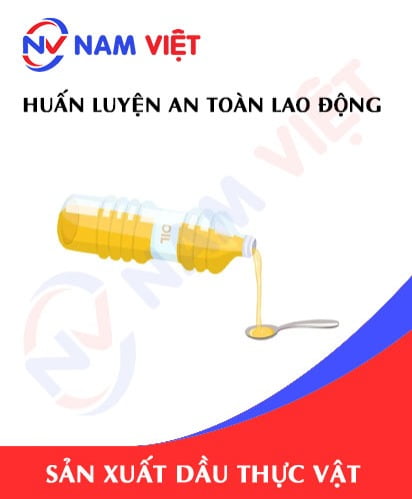






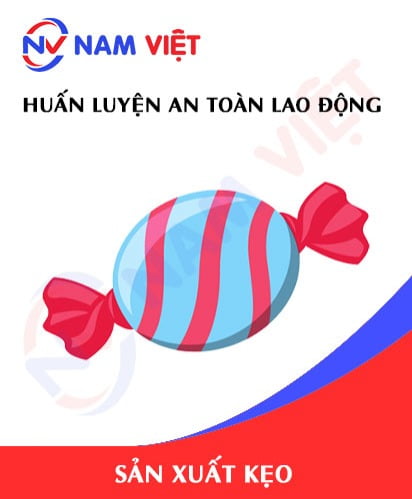
namchinh.haiphong341
Dịch vụ huấn luyện an toàn lao động rất tốt nhé, giảng viên dạy rất sinh động dễ hiểu!